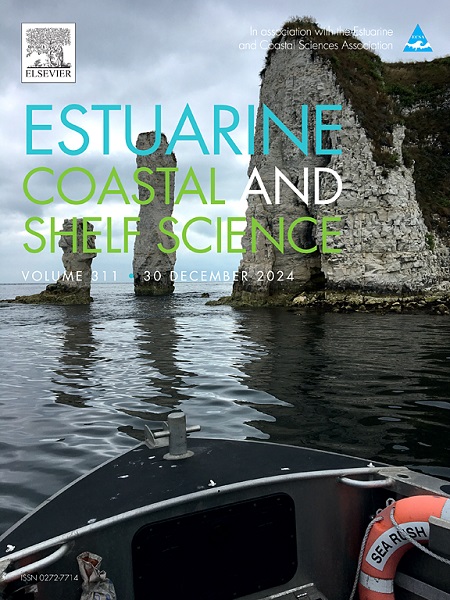Evidence of lower age, fast growth, and shrinking habitat in critically endangered croaker fish Larimichthys crocea
IF 2.6
3区 地球科学
Q1 MARINE & FRESHWATER BIOLOGY
引用次数: 0
Abstract
Overexploitation can impact the life history traits of fish significantly altering growth rates and habitat use. The large yellow croaker (Larimichthys crocea) in the Northwest Pacific has been heavily harvested for nearly half a century, pushing it to the brink of extinction. However, traditional methods have failed to capture historical baselines data on its age structure, growth patterns, and habitat use due to changes that occurred before systematic scientific surveys began. This study aimed to reconstruct these baseline data by analyzing otoliths from three distinct geological times representing varying levels of human disturbance: Early Pleistocene (fossil site dated 1.90–1.35 Ma), Middle to Late Holocene (archaeological sites dated 5000–1000 B.P.), and modern periods. Biological age was estimated from otoliths and verified using stable isotope (δ18O) analysis. Modern wild large yellow croakers are significantly younger (1.1 ± 0.8 years) compared to those from the Holocene (3.2 ± 1.8) and Pleistocene periods (5.3 ± 2.4). Additionally, modern otoliths exhibit a higher growth rate compared to archaeological and fossil otoliths. Many archaeological and fossil otoliths show δ18O values well below −4‰, indicating that historical populations of large yellow croaker inhabited a broader range of environments, including brackish water conditions not observed in modern populations. These findings highlight how human impact has acted as a selective pressure on fish, leading to significant changes in age, growth patterns, and habitat use.

求助全文
约1分钟内获得全文
求助全文
来源期刊
CiteScore
5.60
自引率
7.10%
发文量
374
审稿时长
9 months
期刊介绍:
Estuarine, Coastal and Shelf Science is an international multidisciplinary journal devoted to the analysis of saline water phenomena ranging from the outer edge of the continental shelf to the upper limits of the tidal zone. The journal provides a unique forum, unifying the multidisciplinary approaches to the study of the oceanography of estuaries, coastal zones, and continental shelf seas. It features original research papers, review papers and short communications treating such disciplines as zoology, botany, geology, sedimentology, physical oceanography.

 求助内容:
求助内容: 应助结果提醒方式:
应助结果提醒方式:


